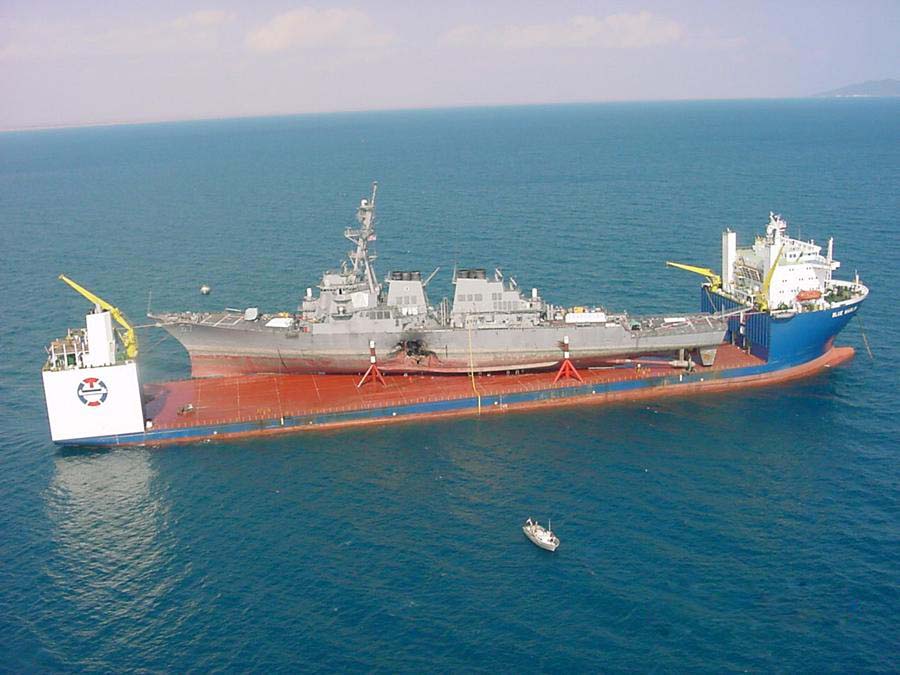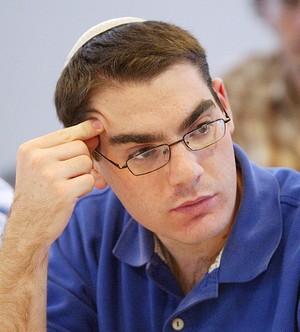Updates from the Military Commissions, 11/13: Finally, a Cross-Examination!
When last we left Lawfare readers, the prosecution in the United States v. al-Nashiri military commission had begun “preadmission” of evidence despite the ongoing refusal of defense counsel to participate.

Published by The Lawfare Institute
in Cooperation With

When last we left Lawfare readers, the prosecution in the United States v. al-Nashiri military commission had begun “preadmission” of evidence despite the ongoing refusal of defense counsel to participate. This process continued Nov. 13, but with an interesting twist.
Proceedings began with brief preliminary matters. The presiding judge, Col. Vance Spath, again noted the absence of both al-Nashiri and most of his designated defense counsel. He instructed the defense to provide the court with an update on its search for additional learned counsel (though he reiterated his view that additional learned counsel was unnecessary and that he had not released Richard Kammen, the current learned counsel, from the al-Nashiri defense team) and indicated his intent to seek such updates twice weekly. He also ordered the prosecution to work with the necessary officials to declassify, to the extent possible, information about the alleged intrusions that triggered defense counsels’ resignations, which he indicated would reveal “the complete lack of evidence of intrusion in this case for this accused.”
The proceedings then moved on to the remote testimony of Emily Olson-Gault, director and chief counsel of the American Bar Association (ABA)’s Death Penalty Representation Project. (Note: Olson-Gault, readers may recall, had authored an affidavit asserting that ABA standards require a learned counsel at every phase of a capital case, including pretrial stages. This, in turn, was cited by the defense team in justifying its refusal to participate in the ongoing proceedings following Kammen’s resignation.)
Spath initially questioned Olson-Gault directly, probing both the substance of her views as well as the facts surrounding how she came to prepare the affidavit. Olson-Gault explained that she was approached by Eric Freedman, a professor at Hofstra and a member of her steering committee, who put her in touch with Michel Paradis. Paradis was the only person associated with the defense team with whom she spoke and he had only provided “very minimal background”: that a learned counsel has resigned for ethical reasons, leaving only a younger attorney without capital litigation experience or training. Her affidavit, she affirmed, was based on that information and her interpretation of relevant ABA guidelines
Olson-Gault repeatedly explained that she had no particular familiarity with the military commissions system, and was not an expert on their requirements. Nevertheless, Spath engaged her in a wide-ranging examination, where he emphasized that al-Nashiri had a large, well-trained legal team that had worked with him for years. Judge Spath questioned Olson-Gault on the ABA rules surrounding client abandonment, on the apparent duty of counsel to continue representation when ordered to do so by a tribunal, and on language in the Military Commissions Act suggesting only a more limited requirement of capitally qualified counsel.
Next, al-Nashiri’s remaining defense counsel, Navy Lt. Alaric Piette, asked Olson-Gault a series of questions. Using thinly veiled “hypotheticals” where he described his own training and situation, Piette repeatedly asked whether his background suffices to permit him to make litigation decisions on behalf of his client under the ABA guidelines. Her answer in each case was no.
Next, trial counsel Mark Miller examined Olson-Gault on behalf of the prosecution. He repeatedly pushed her on whether specific capital training was necessary for every aspect of trial, even those that were common in various non-capital cases, such as attacking the chain of custody for evidence. Throughout, Olson-Gault asserted that having a capitally-qualified attorney directing the team was necessary under the guidelines for all phases, no matter the task. Miller then pressed her on the factual underpinnings of her affidavit, emphasizing the fact that Paradis was the only person associated with the defense she had spoken with, not Piette, Kammen, or any of the other members of al-Nashiri’s direct defense team. Miller suggested that the affidavit was mistaken because other attorneys were in fact representing al-Nashiri. In response, Olson-Gault insisted this was not the case. Only relevant to the guidelines is whether attorneys are working on the case, not whether they are assigned to the case. Miller also pressed Olson-Gault on whether her affidavit had masked the fact that the Supreme Court and military courts did not accept the ABA guidelines as binding. She conceded that she had not cited certain cases he identified but denied that her affidavit was intended to create the impression that the ABA guidelines were accepted as “gospel” as Miller asserted.
Finally, on re-direct examination, Spath again pressed Olson-Gault on whether the guidelines are binding on the military commissions. Olson-Gault conceded that they were not mandatory for courts-martial under the Uniform Code of Military Justice and that the language of the Military Commissions Act (MCA) requiring learned counsel to “the greatest extent practicable” required judicial interpretation. That said, she maintained that the ABA guidelines ought to be given substantial weight in the present proceedings, particularly given that Congress discussed the ABA guidelines in the course of enacting the MCA.
After a brief break, the prosecution called John Adams, assistant director of the intelligence directorate at the FBI, as a witness. Following preliminary questions about Adams’s background, experience, and training, Miller questioned him about his October 2000 trip to Yemen as an investigator of the Cole bombing. Miller showed Adams a series of photographs of the bombing scene and the body recovery operation that followed. Adams explained details of each photograph, identified himself and colleagues in some, and discusses some of the investigative techniques used at the scene. The prosecution then requested the photographs be entered into evidence, the defense declined to take a position, and Spath explained that he would temporarily hold off on admitting them into evidence, consistent with the “preadmission” procedures employed previously.
Next, Adams described how the investigative team searched for the remains of items that did not belong to the ship, and in particular a small ship that may have carried a bomb to the Cole. Miller then presented him with an evidence bag containing machine pieces and confirmed that Adams had collected them from the scene. Adams explained that he had collected them because they did not appear to come from the Cole.
Following Adams’s testimony, Spath briefly discussed the importance of getting clarity regarding Paradis’s apparent ongoing role in the matter, despite his having been conflicted off the case due to his role in representing another detainee in separate proceedings. Spath concluded the hearing once again by asserting that the absence of the resigned civilian counsel from the defense team was inappropriate, and that Piette’s refusal to cross-examine witnesses was a “strategic decision” that reviewing courts would not view as ineffective assistance of counsel under Strickland v. Washington.



.jpg?sfvrsn=d5e57b75_7)

